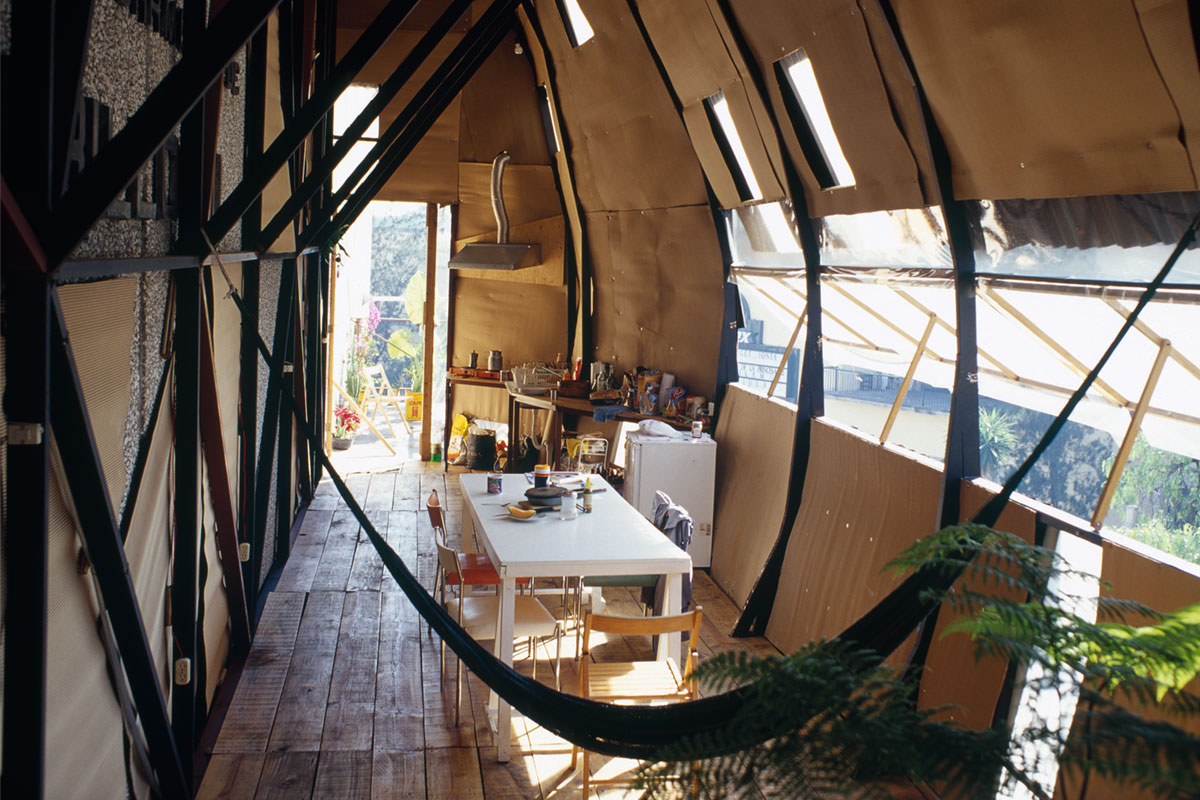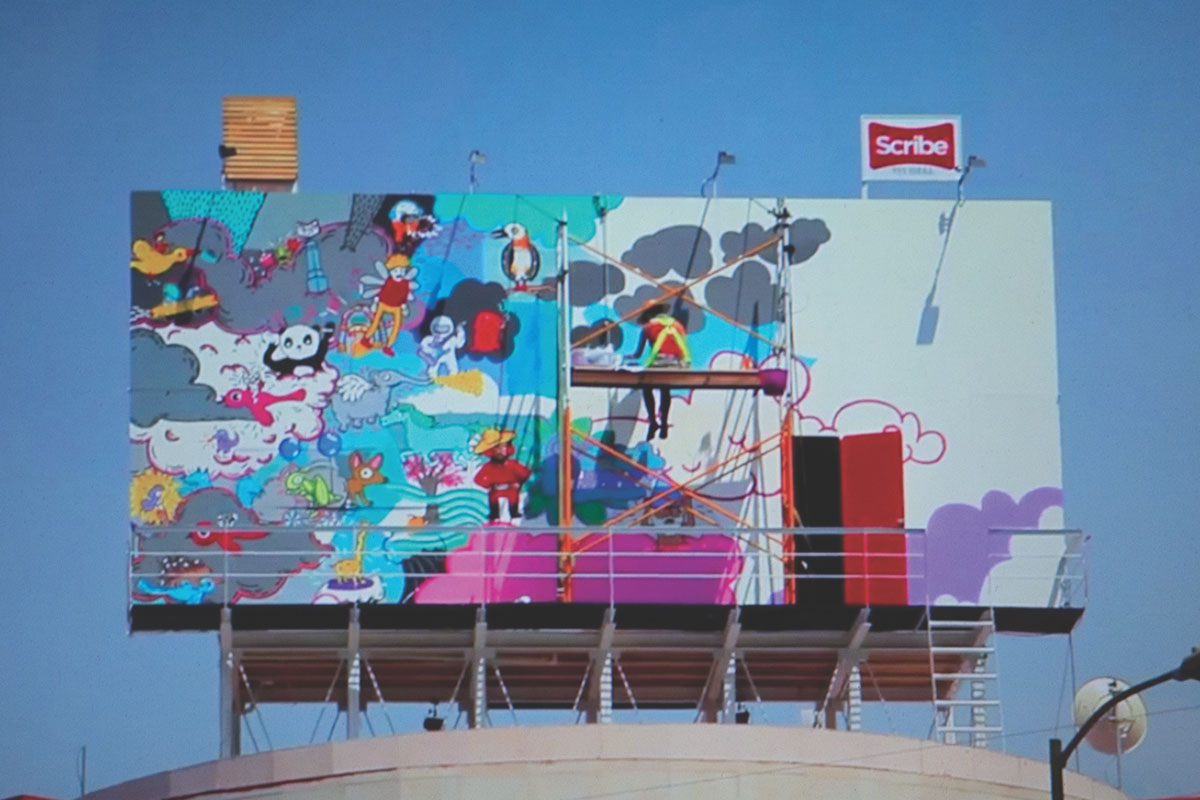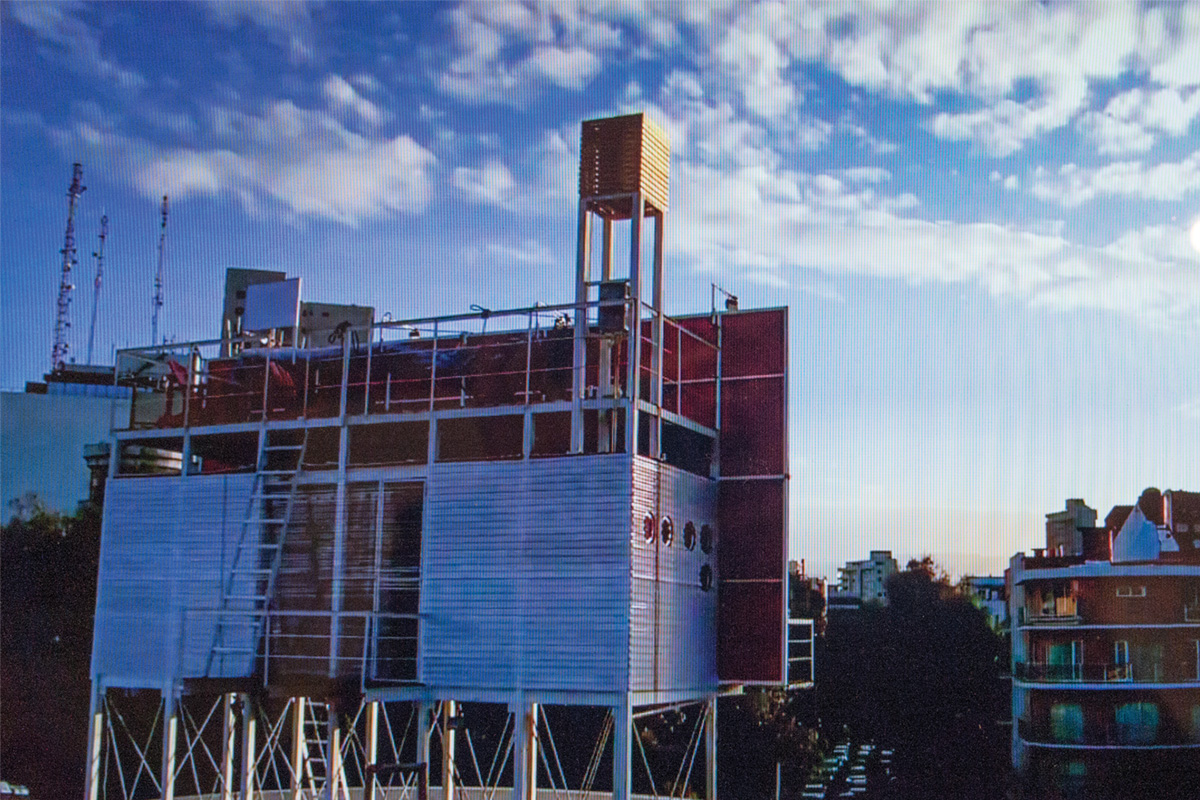



Body and Image in Hector Zamora’s installation "Paracaidista Av. Revolucion 1608 bis"
The article delivers an interpretation of the installation Paracaidista Av. Revolución 1608 bis, by Mexican artist Héctor Zamora, built on the façade of the Carrillo Gil Art Museum in 2004, using its urban setting as a reference point. The contrast between image and body is emphasized by the conjunction of the façade’s placement and the use of the installation as a dwelling. The façade is understood as an area destined primarily for the image, while the dwelling was acti-vated as a visual interruption of the perceptive conditioning of the city, which offers surfaces of this sort for publicity uses. The article suggeststhat the intervention represents an interference by means of the body thatdwells, revealing a vertical emptiness which cannot be escaped, whether as image or as fiction.
Cuerpo e imagen en la instalación Paracaidista Av. Revolución1608 bis de Héctor Zamora
Este artículo hace una interpretación de la instalación Paracaidista Av. Revolución 1608 bis, del artista mexicano Héctor Zamora, realizada al exterior del edificio del Museo de Arte Carrillo Gil en 2004, con su contexto urbano como punto de partida. En éste se señala el contraste entre imagen y cuerpo mediante la conjugación entre el emplazamiento de la fachada del edificio y el uso de la instalación como vivienda; se considera la fachada como una zona destinada principalmente a la imagen, de manera que el habitar se activó como una interrupción visual al condicionamiento perceptivo de la urbe, que encuentra este tipo de superficies ocupadas por la publicidad. Se propone así que la intervención realiza una interferencia por medio del cuerpo que habita, y señala un vacío vertical al que no es capaz de sustraerse como imagen ni como ficción.
Corps et image dans l'installation "Paracaidista Av. Revolución1608 bis" par Héctor Zamora
Cet article interprète l’installation de l’artiste mexicain Héctor Zamora “Paracaidista Av. Revolución 1608 bis”, réalisée à l’extérieur du Musée d’art Carrillo Gil en 2004, prenant son contexte urbain comme point de départ. Dans celui-ci, le contraste entre l’image et le corps est mis en évidence par la conjugaison entre l’emplacement de la façade du bâtiment et l’utilisation de l’installation comme habitation ; la façade est considérée comme une zone destinée principalement à l’image, de sorte que l’habitation a été activée comme une interruption visuelle du conditionnement perceptif de la ville, qui trouve ce type de surface occupée par la publicité. Il est donc proposé que l’intervention fait une interférence à travers le corps qui habite en signalant un vide vertical (une terrain vague) qui n’est pas capable d’être enlevé comme une image ni comme une fiction.

